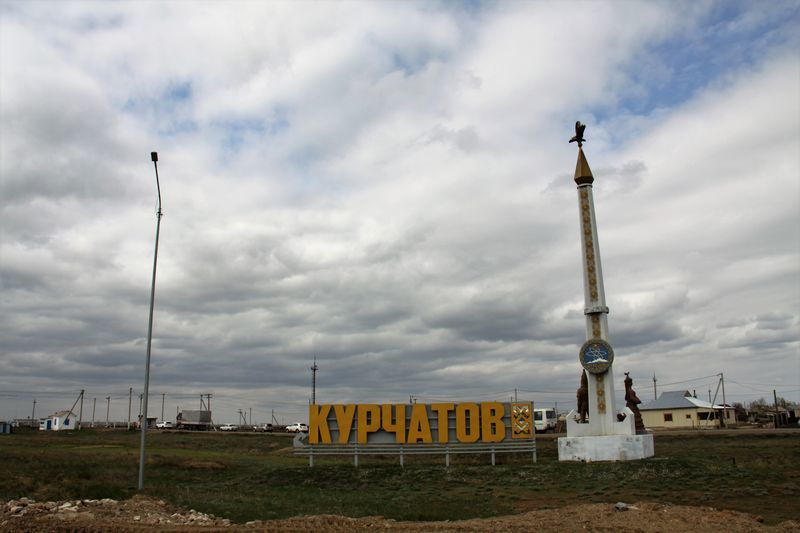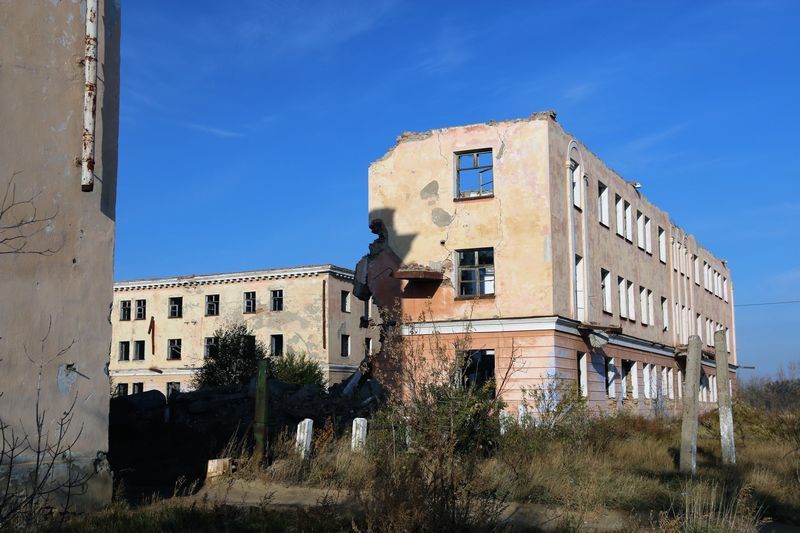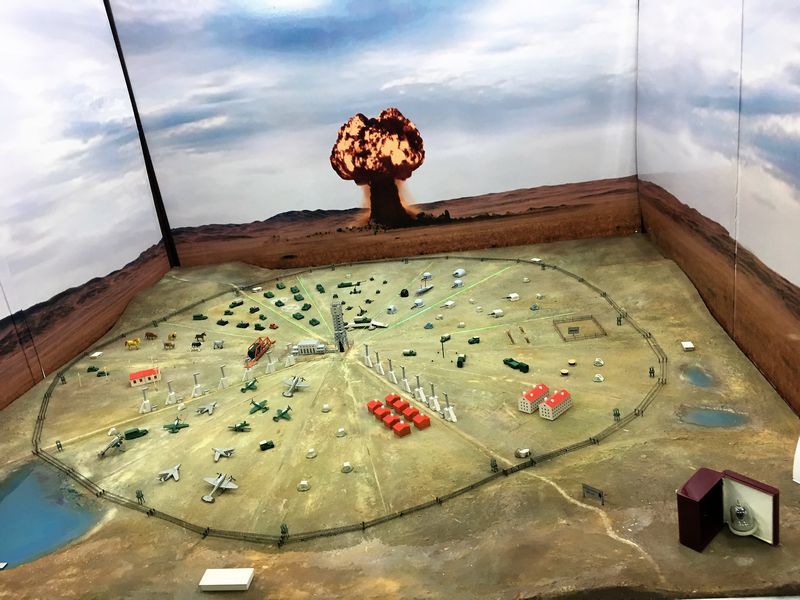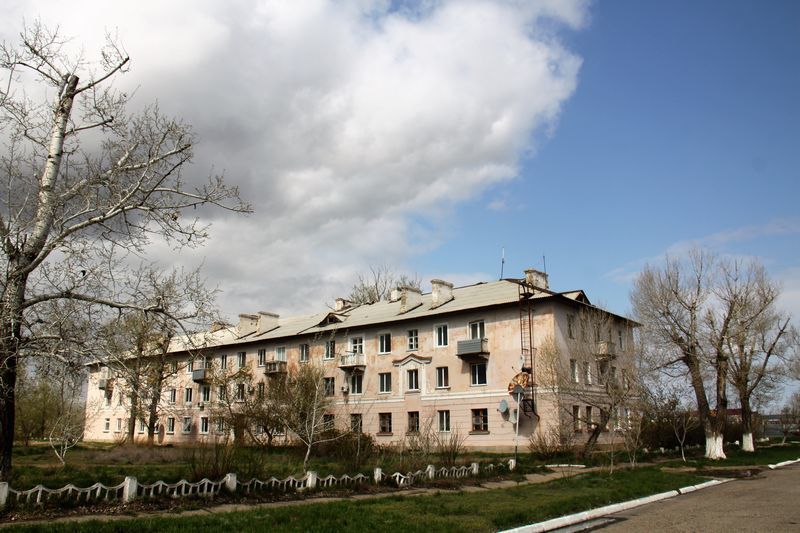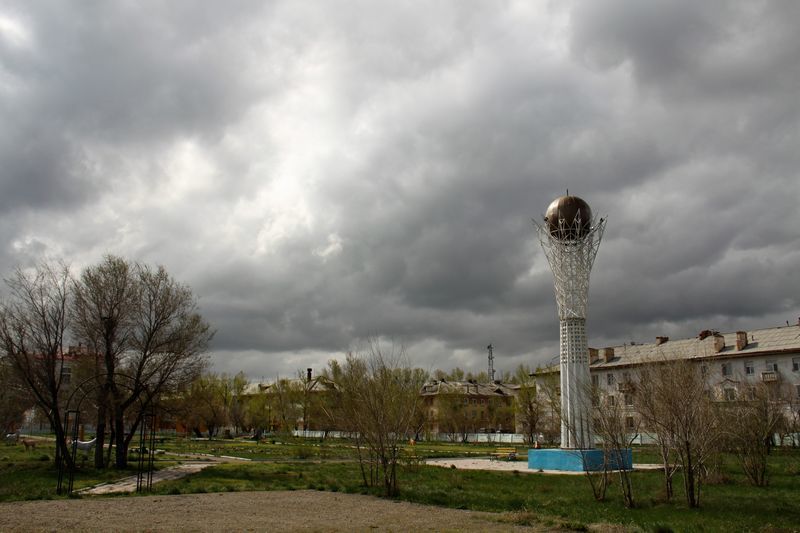Kurchatov | Kazakhstan Travel Guide
Kurchatov - Home of Soviet Nuclear Weapons
Kurchatov History
Kurchatov Transport
Kurchatov Sights
Kurchatov Hotels
Formerly a secret and closed city of the highest degree, the HQ of the Soviet Union’s atomic weapons program. A place no outsider could ever imagine gaining access to. Now a semi-abandoned town with a dwindling population that you can reach on a normal train.
Kurchatov is a fascinating and little-visited spot with a fascinating recent history. For those interested in the cold war, in the development of the most lethal technologies in the world, in dereliction and crumbling buildings, there is nowhere better.
If you visit Los Alamos (where the Manhattan Project, the US’ atomic weapons program) took place you will find lovely restaurants and wine bars, a museum that mostly ignores what the bomb was built to do (and did), along with schools, people living life, and all the mod cons of the 21st Century United States.
Kurchatov is the opposite of that, so if you find Los Alamos a bit genteel then we invite you to come to Kurchatov and see how things could have been for some, and are for others!
Kurchatov History
Situated on the Irtysh River, and founded for one specific and laser-focused purpose; development of nuclear weapons to counter the US threat, as demonstrated so lethally in Japan in 1945.
Lavrentii Beria, among the top two most feared men in the USSR at the time, was put in charge of this project and ran it with his customary tact and generosity of spirit – by which we mean with an iron fist squeezing rapid progress out of all participants while not allowing any information to leak to the outside world. Very few people were willing to risk disappointing or betraying Beria.
The story of the development of the weapons themselves is best explained by experts, and in the museum in the town itself so we won't go into that here, suffice to say that it was successful and thanks to the work done here the world entered a period where the threat of nuclear annihilation loomed over the heads of all of mankind, a paradigm shift in the potential damage from any future war between major nations – also a boon to post-apocalyptic literature and movies if you’re into that kind of thing, so not all bad!
At the time this town was known by the name Semipalatinsk-21, simply the postcode of the area. The current name comes from Igor Kurchatov (whose statue stands here still), nuclear physicist, Russian Oppenheimer, and father of the Red Bomb.
After the closure of the test site (testing moved elsewhere as the bombs grew bigger) the economy of the town took a dip, turns out it is hard to simply redirect efforts from bombs to literally anything else. Most of the population (once as high as 30,000 maybe, it’s still a secret) left, and there are now maybe 5000 folks living in and around Kurchatov. As 5k people don’t need as many buildings as 30k people much of the town has collapsed into disrepair.
The northern part of town has many abandoned and derelict buildings including some one-tie prestige structures (hotel for visiting officers, House of Culture), which can be explored.
Apartment buildings in the Southern part of the town are occupied but many of them have suspiciously few lights on at night, there is a definite sense that the town may not need to be there for too much longer.
What keeps people here? As before it is nukes, but this time they are not making them, but clearing up after their predecessors. Scientists study the longer term effects of the weapons used in the nearby Nuclear Polygon, engage in ongoing decommissioning, researching power generation (there is a test reactor inside the Polygon still), as well as occasionally helping to educate visitors such as tourists and school groups.
While a visit to Kurchatov is most definitively dark tourism and will be nuclear-based it is still an interesting place to wander around the urban settlement.
There are scenic views along the river, a couple of bars where you can sink a pint or two with the locals, and plenty of amazing photos to be taken.
Below is a brief list of things to see and do in Kurchatov town, more information on the nearby Chagan abandoned airbase and on the Nuclear Polygon itself can be found at those links to separate travel guides.
Kurchatov Transport
How to get to and travel around Kurchatov?
Flight
There are no major airports near to Kurchatov (only the massive abandoned airfield at Chagan!), the nearest local ones would be Semey (about 2 hours away) and Ust-Kamenogorsk (5 hours away).
Train
Degelen station is the stop for Kurchatov and this is part of the main Kazakh network, so you can get here from Astana/Nur-Sultan on an overnight train, and from Semey in just a few hours. The station is a short drive from the town itself.
Road
In a decent car (the road is a highway, but still has plenty of bumps!) it would take about 2 hours from Semey, the nearest city, by road. A drive to Astana would be around 12 hours with Pavlodar being halfway along that route.
For travelling around the town just do it on foot, from one end of the town to the other is only around 1.5 km. There are informal taxis though (basically hitchhiking for a few tenge) that can be used if you’re tired though
Kurchatov Sights
What to do in and around Kurchatov?
We cover the Nuclear Polygon (test site) and the Chagan abandoned airbase in separate travel guides, hit those links for info on those specific sites.
Museum of the Semipalatinsk Test Site
Easily the number one attraction in Kurchatov itself is this modest but utterly fascinating small museum, part of the Institute of Radiation Safety and Ecology and occupying just part of one building on this secure site, permission is needed to visit here and it isn’t possible to just show up and be let in. Arrange this in advance!
After passing through basic security (which includes counting cameras as photos are allowed inside the museum but not outside) you enter the oldest building in Kurchatov, the place where all the sciency stuff was done that made the big bangs in the nearby test site itself. Here there is a somewhat dated exhibit of the technologies used at that time, as well as timelines of the development of the bombs, models showing the devastation wrought by the first test, jars of gruesome defects caused in animals by the effects of the bomb and the radiation it emitted, twisted metal to show the stunning temperatures and forces put out by the result of the science done here, and much more besides.
The tour here is done by one of the scientists and they have a full grasp of the physics of what happened and can give a very detailed and compelling narrative which can be quite hard to follow for the complete layman, but it is worth keeping up for sure!
The old machinery looks very retro and basic but this was cutting edge stuff at the time and deserves the utmost respect; mass spectrometers, ultra-high-speed cameras, all manner of equipment is on display.
You can also visit the office of Kurchatov himself, director of the project. Sign the guestbook, pretend to be on the phone explaining to Beria why some delay or another has happened (try to do it without panicking!). This is the ideal start to a tour of the actual test site and here you will meet the people who will accompany you to the epicentre, so pay attention, ask questions, and write something nice in the guestbook!
Abandoned Palace of Culture and Hotel
Just across the road from the Mayak Hotel, these two Soviet-era buildings are abandoned and collapsing, but make for a simple and quick urb-ex – some locals claim there is a KGB torture site in the basement of the derelict House of Culture (this is unlikely) and there isn’t much left here apart from remnants of the once-ornate staircases. Worth a 20 minutes visit though for photos and a wander around the outside at the very least.
Former home of Lavrentii Beria
The feared head of the NKVD and all-round baddy, Beria was in charge of the nuclear program and so, of course, had himself a nice house built here. These days it is an Orthodox Church, you can pop in when it is open but it is not a museum nor does any sign make any mention of this being the residence of a proper wrong ‘un at one time in its history. It does appear on magnets sold in the one shop in town that has souvenirs though, so it isn’t a secret!
Memorials and Statues
There are a number of these around town. Of course, there is a WWII memorial, but considering that there wasn’t even a settlement here until the war was over it does seem a slightly odd thing to place here.
There is a Statue of Kurchatov, a small version of Nur-Sultan’s Bayterek Tower, a stone marking ‘lovers point’ along the river, an atom monument, and a bust of Abay (who has Lenin levels of ubiquity in Kazakhstan). Walk around, collect them all!
At the entrance to the town, near Degelen Railway Station is the town sign, it is a good spot to stop for photos when arriving at or departing from the town, don’t forget to get a photo here too!
Kurchatov Hotels
There are not too many options here, a basic guesthouse in an apartment building on the south side of town (near to the welcoming Camel Café - a bar, check it out) is a cheap option and very ‘real’ indeed. The only proper hotel in Kurchatov though is the Hotel Mayak, at the north end of town, looking like a British 1970s sixth form centre or a Scandinavian care home from the outside but inside a gloriously retro soviet-era spread of various grey walls on wood. This is where you should stay! Decent enough breakfast, somewhat working Wi-fi (in the lobby anyway) and a nice little garden that back onto the river.
The hotel is owned by the Atomic Energy Commission so permission is needed to stay here (which a local host can get for you)
Interested in a tour to Kazakhstan?
Travel to Kazakhstan with the
Kazakhstan travel experts, Koryo Tours
Kazakhstan Tours | Sign up to the mailing list | About Koryo Tours
